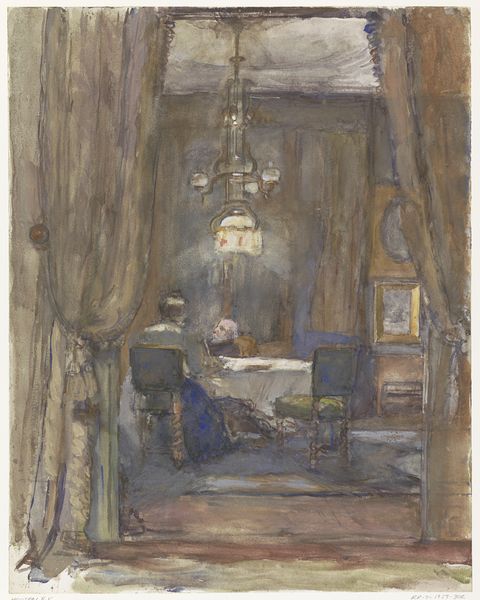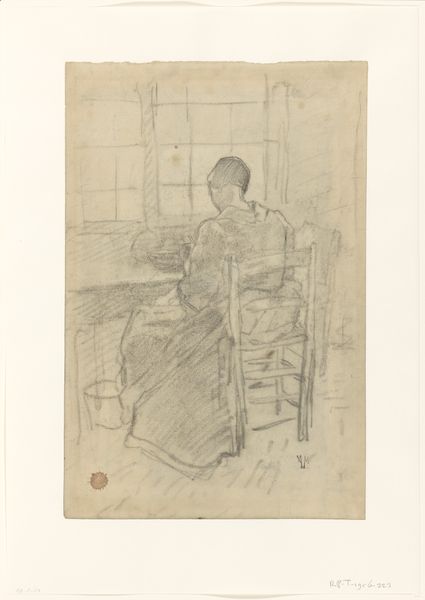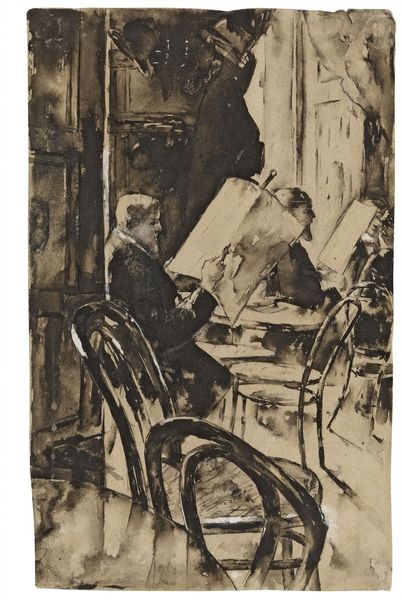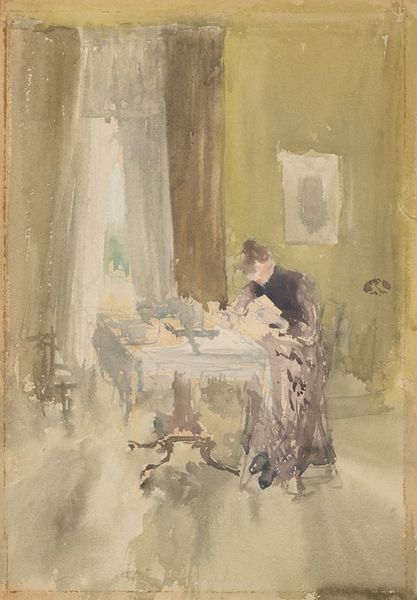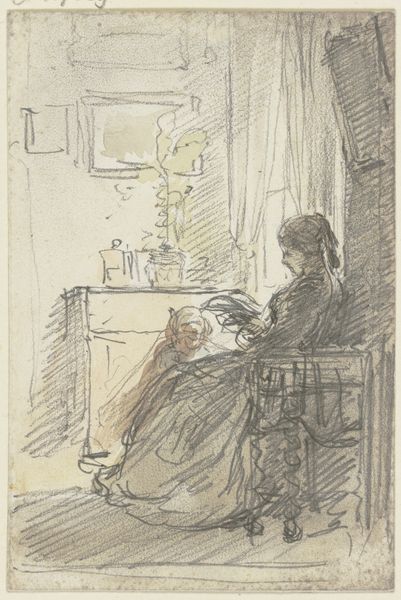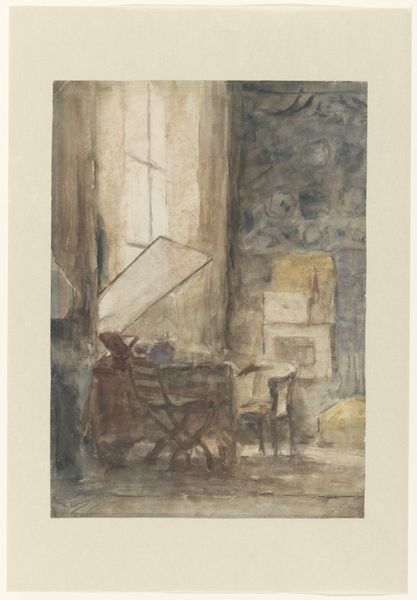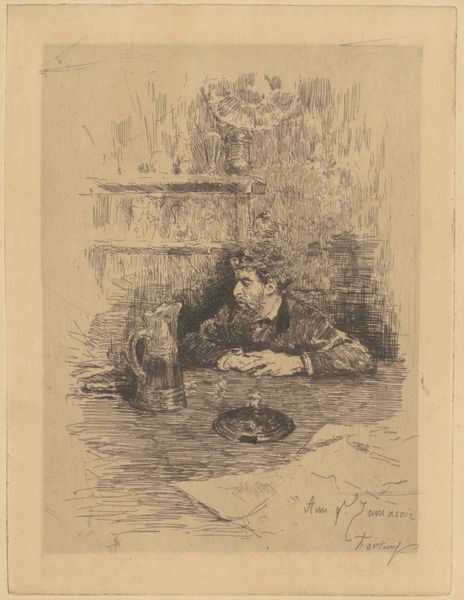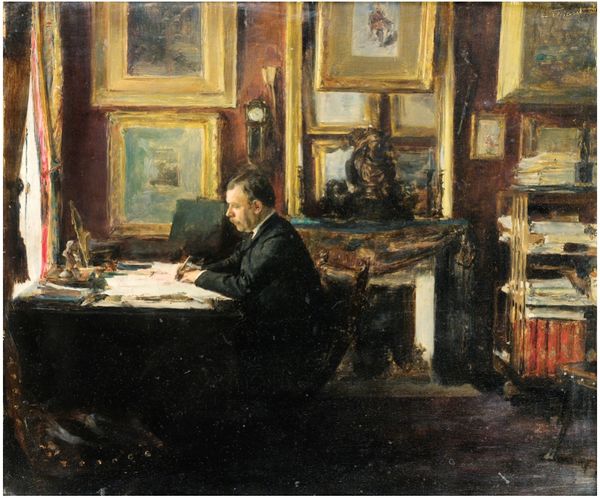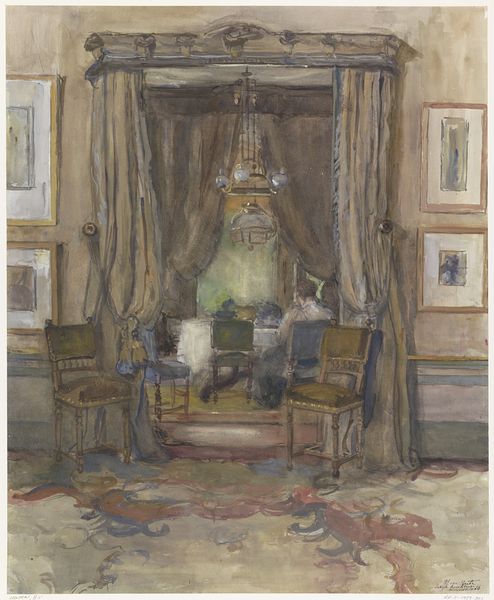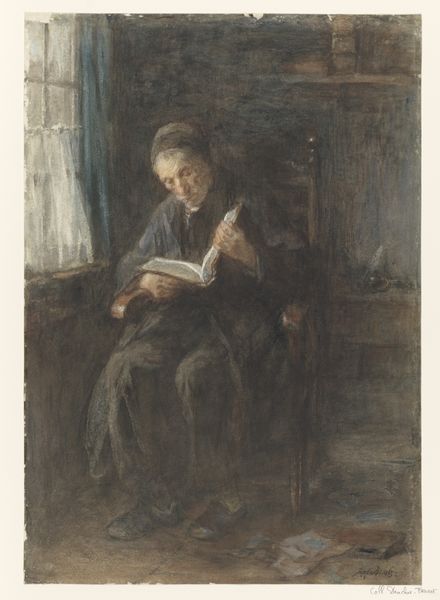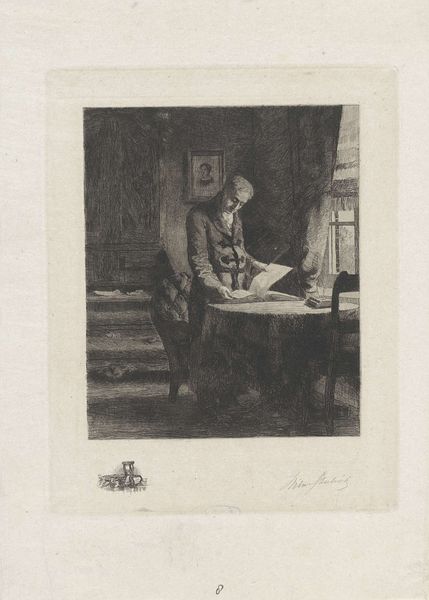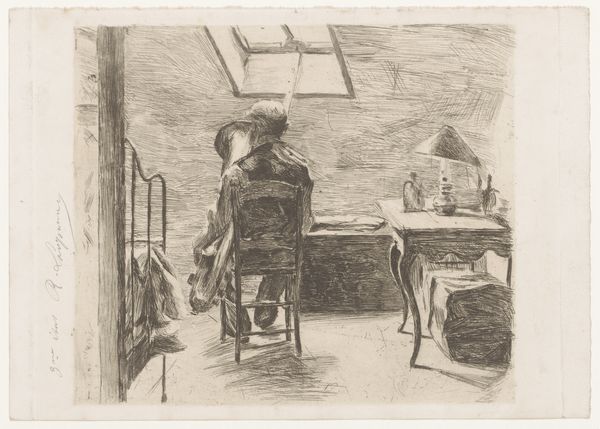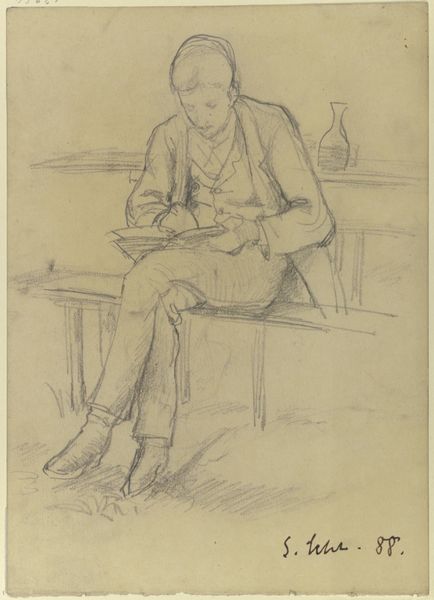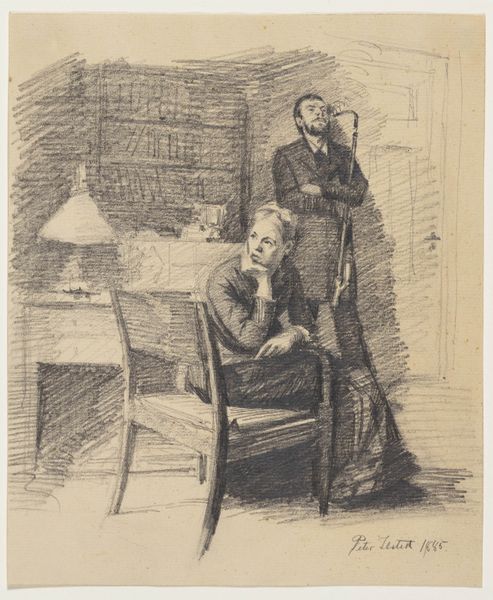
Interieur met schrijvende man op sofa achter tafel 1874 - 1918
Dimensions: height 455 mm, width 288 mm
Copyright: Rijks Museum: Open Domain
Curator: This watercolor piece, titled "Interior with a Man Writing on a Sofa Behind a Table," by Martinus van Andringa, was created sometime between 1874 and 1918. It's currently held in the Rijksmuseum. My immediate reaction is of quietude. It has a subdued, almost melancholy feel to it. The muted palette really enhances that. Editor: The scene absolutely evokes a sense of contemplation. We see a solitary figure immersed in his work, surrounded by the objects and trappings of his interior world. I immediately think about the societal expectations placed upon men during the late 19th century, their roles and private intellectual pursuits often contrasted with their public lives. Curator: It's interesting that you mention expectation and role, because his workspace—with that chaotic array of papers and inks—contrasts directly with the sterile order that defined burgeoning industrialization. Editor: Exactly! What I see are the blurred boundaries between professional and personal identity. Is he free within these self-imposed roles and rituals or bound by them? Curator: The soft, almost hazy brushstrokes give an impressionistic feel that allows him a type of ambiguity to challenge social norms of its time. I am intrigued by the ambiguous objects scattered around. Editor: I agree. There's a real interplay here between visibility and concealment, an active negotiation by the artist around issues of privacy, gender, and artistic representation. Do you see the sculpture faintly in the background? Curator: I do! And the way the light hits the surface suggests themes of authorship. Are these choices meant to create visual interruptions or is he just trying to blur conventional boundaries? It brings us into an ambiguous relationship with how identities are conceived. Editor: The piece does so much in creating questions about art, the construction of the self, and the shaping influences of their social context. Curator: This subtle composition really holds a striking relevance even now, it reflects questions on identity that impact all individuals irrespective of class and gender.
Comments
No comments
Be the first to comment and join the conversation on the ultimate creative platform.
